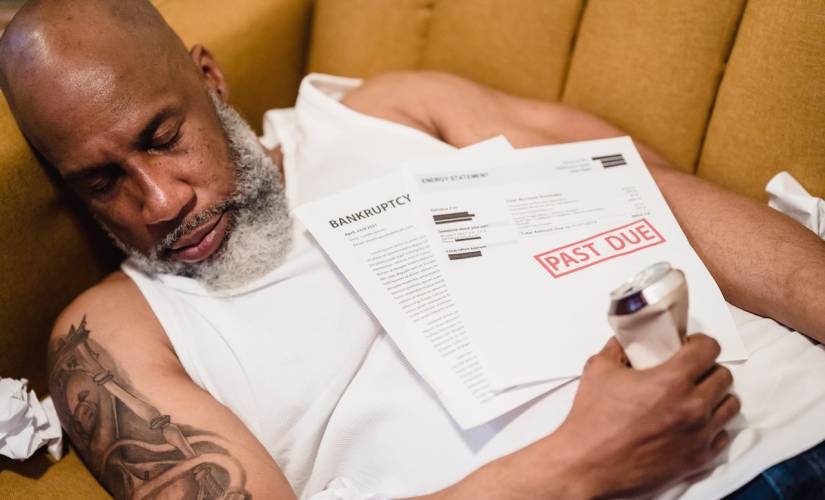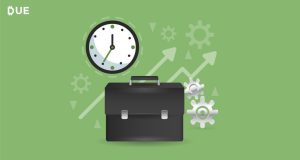Knowing When to File for Bankruptcy

Life doesn’t always go according to plan. You may have needed to take on debt that outgrew your ability to pay it off each month. Now you’re wondering how to get your financial situation back in order.
Knowing when to file for bankruptcy is a valuable skill for individual consumers and small-business owners. Learn more about it and determine if it’s the best move for your financial needs.
Table of Contents
What Is Bankruptcy?
Bankruptcy is a legal process begun by people who have too much debt. They must sign a federal petition that considers their outstanding financial obligations or debts before requesting that their creditors work with them to resolve their debt with any remaining assets.
What Are the Types of Bankruptcy?
People can accrue too much debt as individual consumers or business owners, so numerous types of bankruptcy exist to address those situations. These are the specific chapters outlined in the U.S. bankruptcy code that you may consider if you find yourself unable to repay debts.
Chapter 7: Individual Liquidation
Most people who need to claim straight bankruptcy over personal debt will file under Chapter 7. A federal court appoints a trustee to assist the individual with selling property to repay lenders or creditors. You can claim specific property exempt from Chapter 7 bankruptcy, like your car, pension, or household equity.
Chapter 11: Reorganization Bankruptcy
Small-business owners may be able to file Chapter 11 bankruptcy to reorganize their assets, affairs, and debts. If the collection of these factors exceeds $ 5 million, an examiner will step in to guide you through the process.
This can be a helpful step for business owners because it allows the company to remain open and operational while restructuring occurs. Creditors can also propose a Chapter 11 bankruptcy if the debtor doesn’t offer the idea first.
Chapter 13: Asset Maintenance and Repayment Plan
Individuals who file for Chapter 13 bankruptcy can keep their assets but must repay their debts within three to five years of a court approving their plan. You won’t have to liquidate anything if you don’t miss or skip any payments. Most people who don’t receive approval for this bankruptcy are workers without reliable sources of income.
When to File for Bankruptcy as an Individual
Before filing for bankruptcy, it’s essential to negotiate with your debtors or creditors. They’ll still get their money back if there’s a way for you to make long-term payments and eventually pay off your debt more efficiently.
Sometimes debtors will negotiate for that reason. However, they may not if they don’t see a viable path forward due to your financial history or situation.
When negotiating isn’t possible, and you’re about to lose your house or other essential assets because you can’t make monthly payments, it may be time to file for bankruptcy. First, schedule a credit counseling session to get the correct certificate for your requested type of bankruptcy.
A counselor will review your assets and liabilities during that session and find the best solution for your needs, even if that isn’t bankruptcy. You can find these experts by reaching out to federal credit counseling agencies.
You might feel worried that your property or existing net worth won’t be enough to pay off your debts. If that’s the case, your senior-most credit facility will establish a financial solvency plan to remedy the remaining debt owed alongside your credit counselor. By working out any necessary amendments, your minority lenders will follow the senior-most decisions if they create the plan in good faith.
When to File for Bankruptcy as a Business
When debtors don’t negotiate with small-business owners regarding their loans, it could be time to file for bankruptcy. Typically this would mean a Chapter 11 case, which has a few pros and cons for people operating small companies.
You may benefit from this type of bankruptcy if your creditors or debtors don’t meet to discuss new contract terms. Instead, the federal case would bring everyone to the same table to discuss options like extended payment terms for real estate, equipment, or manufacturing loans.
Small-business owners also don’t have to immediately liquidate their companies or assets to pay off the debt. Instead, they can remain open and operational because Chapter 11 prioritizes repayment plans approved by federal courts. A trustee becomes the facilitator monitoring the ongoing payments after both parties reach agreed-upon terms.
Small-business owners hesitate to file bankruptcy because it can become an expensive, drawn-out process. Depending on the court’s calendar and how easily debtors agree to payment plans, you may pay an average of $ 19,738 just for filing and attorney fees.
Additionally, you would have to make initial payments within the first few months of your plan agreement. That can be challenging after paying legal fees while continuing your daily business operations.
How to File for Bankruptcy
Many steps are involved with filing for bankruptcy. First, familiarize yourself with the process before making any final decisions.
1. Review Your Options
Remember, bankruptcy might not be necessary for your situation. Discharging debts like student loans and unpaid taxes will provide relief while you look into consolidation or settlement. You’ll need your financial history and credit report paperwork to make the best decision.
2. Choose the Bankruptcy Type
If you decide that bankruptcy is right for you or your business, you’ll need to choose from Chapters 7, 11, or 13. Individual or business bankruptcy is the first way to narrow down your options. Afterward, you can decide based on your assets’ value, outstanding debt, and ongoing income.
3. Decide on Finding an Attorney
The American Bar Association and state associations have lists of attorneys ready to assist people with filing for bankruptcy. Legal aid clinics and free services can also help if you can’t afford legal assistance but desire representation.
The option to represent yourself is also called going pro se. You won’t have to pay attorney fees, so you’ll save most of your filing costs. However, you may not receive the debt relief you need. A recent study found less than half of pro se cases resulted in debt discharge, while 93.9% of represented instances did.
4. Pass a Credit Counseling Course
Everyone filing for bankruptcy of any type will have to attend a credit counseling course. It helps people weigh their options to determine the best action, whether that’s bankruptcy or other types of debt relief. If you finish your class more than 180 days before filing, you’ll have to retake it closer to your official filing date.
5. Complete Your Counseling and Legal Forms
After meeting with credit counselors and completing your course, you’ll have to fill out all related forms. There are many involved with any bankruptcy, so prepare for this step to take some time. The forms include your financial history, statements, fees, and other related information. Your lawyer can help if you choose to get representation.
6. Pay Fees and File Forms
Your paperwork also comes with many fees. There are charges for filing, administrative work, and even surcharges if a trustee will oversee the payment plan arrangements with your debtors. Sometimes people can get these fees waived, but only if their income is 150% below the poverty line determined by a federal court.
7. Negotiate With Your Creditors
Whether you appear in court or not, your creditors will sit down with you after you pay your fees and file all necessary paperwork. They will review your situation and determine how best to repay your debts. Any agreements made at this point will be legally binding, as the meeting happens under oath.
8. Attend Debtor Education Classes
You must complete post-filing education classes if your lenders discharge your debts. This guarantees you’ve learned how to manage your finances better based on your academic performance in the lessons and tests. You’ll need to pay the class fee and earn the final certificate to complete your bankruptcy.
What Life Looks Like After Filing
What will your life look like after completing bankruptcy? It depends on how you file and your situation.
Chapter 7 bankruptcies remain on credit records for a decade after both parties resolve the outstanding debt. On the other hand, a Chapter 13 bankruptcy will only stay for seven years.
You’ll also reduce your credit score no matter how you decide to file. That could make it more difficult or impossible to get money from insurance companies and investors if you need to expand your business or recover from an emergency.
If you face significant debt immediately after experiencing bankruptcy, you may have to shoulder it alone for many years. There are limits to how often people can file specific bankruptcy chapters.
Debts That Don’t Count Toward Bankruptcy
You may not need to file bankruptcy if you owe money for reasons that don’t qualify. Here are a few types of debts that federal courts don’t count in bankruptcy filings:
- Outstanding utility bills
- Personal loans
- Credit card debt
- Medical bills
- Payday loans
- Past-due rent bills
Reaching out to legal representation or credit counselors will help determine if your debt qualifies for bankruptcy or if you need alternative solutions.
Know When to File for Bankruptcy
Knowing when to file for bankruptcy is essential to managing your finances. It could make things brighter or not be part of your future. Talk with an expert to see if it’s the best way to manage your debts while maintaining your personal or professional life.
Published First on Due. Read Here.
Featured Image Credit: Photo by Nicola Barts; Pexels; Thank you!
The post Knowing When to File for Bankruptcy appeared first on ReadWrite.
(16)







